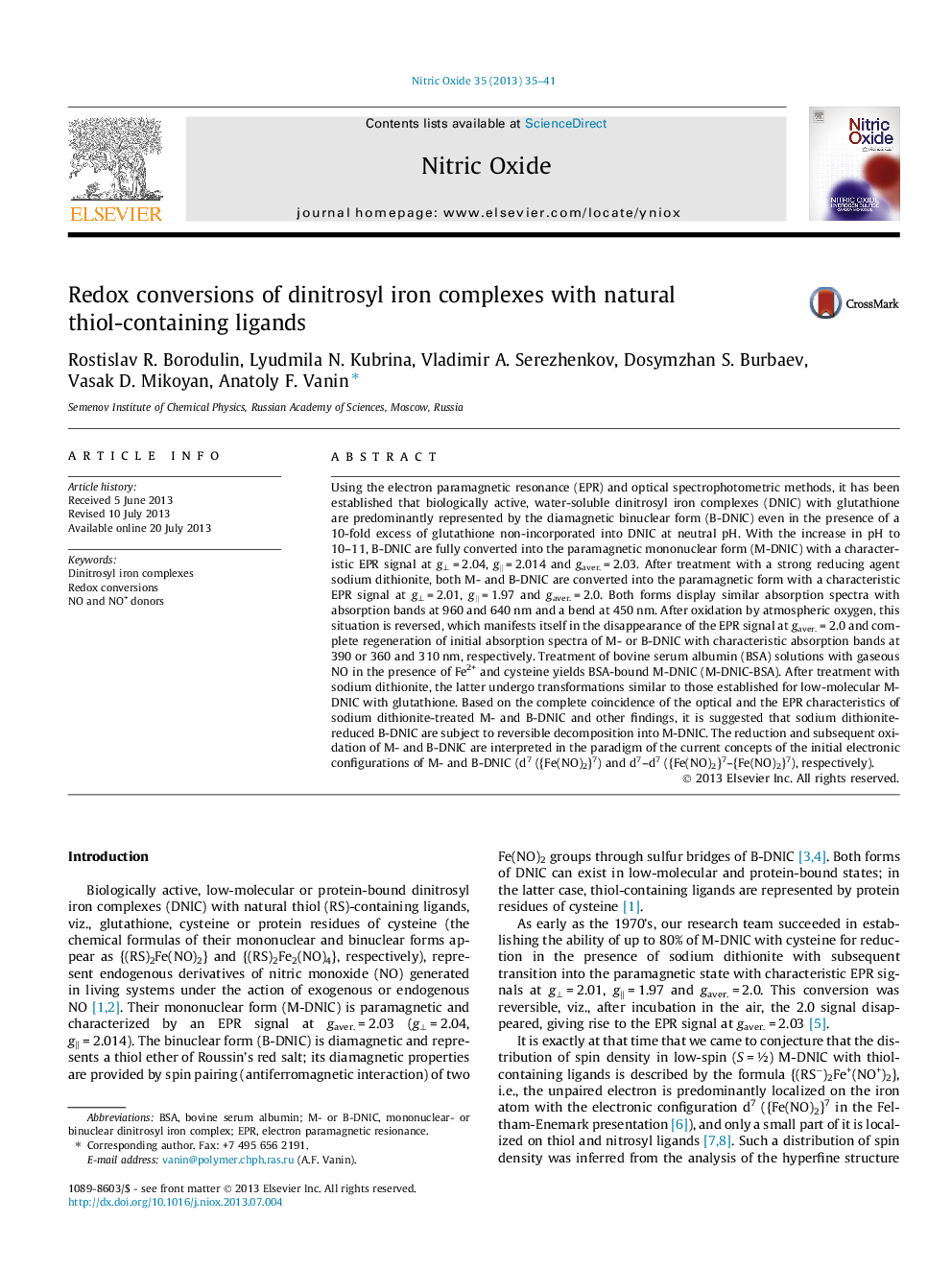| Article ID | Journal | Published Year | Pages | File Type |
|---|---|---|---|---|
| 8345912 | Nitric Oxide | 2013 | 7 Pages |
Abstract
Using the electron paramagnetic resonance (EPR) and optical spectrophotometric methods, it has been established that biologically active, water-soluble dinitrosyl iron complexes (DNIC) with glutathione are predominantly represented by the diamagnetic binuclear form (B-DNIC) even in the presence of a 10-fold excess of glutathione non-incorporated into DNIC at neutral pH. With the increase in ÑÐ to 10-11, B-DNIC are fully converted into the paramagnetic mononuclear form (Ð-DNIC) with a characteristic EPR signal at gâ¥Â = 2.04, gâ = 2.014 and gaver. = 2.03. After treatment with a strong reducing agent sodium dithionite, both Ð- and B-DNIC are converted into the paramagnetic form with a characteristic EPR signal at gâ¥Â = 2.01, gâ = 1.97 and gaver. = 2.0. Both forms display similar absorption spectra with absorption bands at 960 and 640 nm and a bend at 450 nm. After oxidation by atmospheric oxygen, this situation is reversed, which manifests itself in the disappearance of the EPR signal at gaver. = 2.0 and complete regeneration of initial absorption spectra of Ð- or B-DNIC with characteristic absorption bands at 390 or 360 and 310 nm, respectively. Treatment of bovine serum albumin (BSA) solutions with gaseous NO in the presence of Fe2+ and cysteine yields BSA-bound Ð-DNIC (Ð-DNIC-BSA). After treatment with sodium dithionite, the latter undergo transformations similar to those established for low-molecular Ð-DNIC with glutathione. Based on the complete coincidence of the optical and the EPR characteristics of sodium dithionite-treated Ð- and B-DNIC and other findings, it is suggested that sodium dithionite-reduced B-DNIC are subject to reversible decomposition into Ð-DNIC. The reduction and subsequent oxidation of Ð- and B-DNIC are interpreted in the paradigm of the current concepts of the initial electronic configurations of Ð- and B-DNIC (d7 ({Fe(NO)2}7) and d7-d7 ({Fe(NO)2}7-{Fe(NO)2}7), respectively).
Related Topics
Life Sciences
Biochemistry, Genetics and Molecular Biology
Biochemistry
Authors
Rostislav R. Borodulin, Lyudmila N. Kubrina, Vladimir A. Serezhenkov, Dosymzhan S. Burbaev, Vasak D. Mikoyan, Anatoly F. Vanin,
